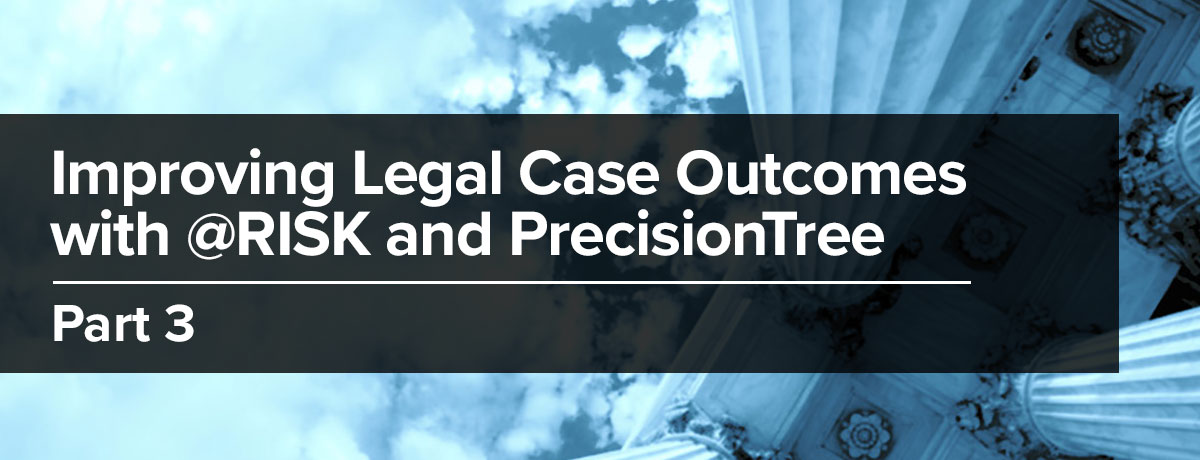
Calculating Unassailable Fair Market Value of Intellectual Property using Monte Carlo Simulation
Previously we discussed the importance of crafting decision trees in litigation strategy and why patent litigation is an expensive, time-consuming process. In part three, we will be focusing on how to leverage Palisade’s @RISK software to overcome decision analysis challenges and calculate probabilities of all possible scenarios occurring to determine fair market value of intellectual property (IP).
As mentioned in our prior series, The Economics of Litigation (download here), patent owners commonly overvalue recoverable damages while defendants typically undervalue them. This disconnect significantly slows the litigation process and emphasizes the importance of presenting quantitative, reliable estimates to get expectations to converge.
Unreliable estimates for IP stem from the challenge of needing to account for variables such as risks, regulations, IP protections, operating budgets, market adoption rates, and more.
Additionally, decision analysis issues must be considered when obtaining accurate estimates. Inaccurate estimates can be the result of biases, poorly obtained probabilities, failing to identify the most important or volatile variables, and more. In The Economics of Litigation, we discussed the various biases that must be countered when calculating estimates such as motivational biases, cognitive biases, and anchoring.
By using a technique known as Monte Carlo simulation, Palisade’s @RISK software removes biases and calculates definite probabilities by running thousands of calculations using a range of random numbers to show the chances of virtually all possible outcomes occurring.
To pinpoint the most important variables in your calculations, it is recommended by damage experts to use risk-analysis software like Palisade’s @RISK to run sensitivity analysis. This software produces easy-to-understand tornado charts that clearly identify and rank the most influential variables and the value of information, which is commonly used to set a price ceiling for discovering information.
Identifying the most important or volatile variables in your estimate allows you to strategically allocate your discovery budget. After creating your decision tree, you can choose a chance node and determine the value of having perfect information for that option. Running sensitivity analysis allows you to focus on the most valuable information, improving your estimates and case outcomes.
By linking the power of Palisade’s @RISK with your spreadsheets in Microsoft Excel, you can strengthen your litigation strategy by calculating unassailable fair market value of IP. More than 93% of Fortune 500 companies are using our software, including intellectual property valuation specialists Pellegrino & Associates who use @RISK for their risk analysis.
"We've used it on more than 300 client engagements in every major sector of the economy, from software and semiconductors to chemical coatings and consumer electronics," said Michael Pellegrino, owner of Pellegrino & Associates. "We apply it to a range of damages models including the assessed value of a product, reasonable royalty payments, total cost of product reproduction, as well as the potential for lost profits – and in all the cases that went to court where we used Monte Carlo simulation, our results were accepted every time.”
In our final series post, we’ll explore ways to enhance your litigation strategy by using @RISK to forecast damages.
At Palisade, the makers of PrecisionTree, @RISK, and other leading risk and decision analysis solutions, we provide cost-effective, easy-to-use analytics to companies who want to make better decisions. To learn more about how we can help you speed up negotiations, determine fair market value of IP, or even solve a different challenge you might be facing, check out the previous series post or request a free trial of @RISK and PrecisionTree, included in the DecisionTools Suite.

